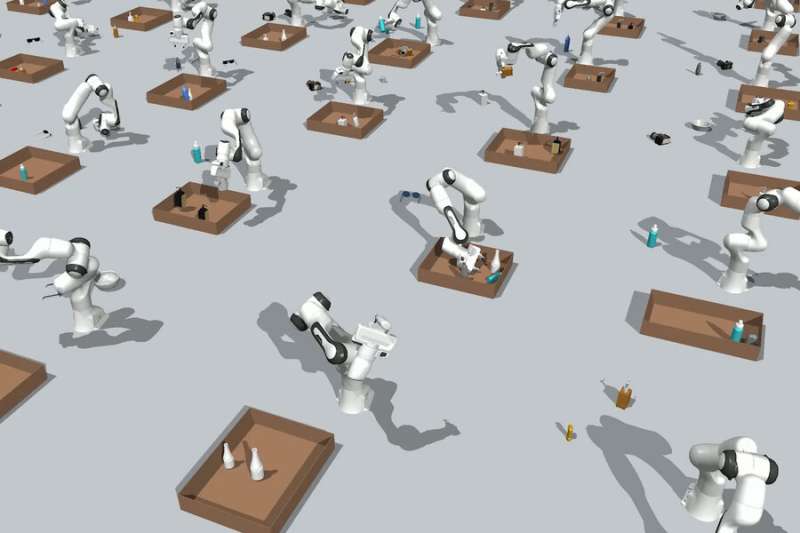Human beings can take great pride in a lot of their abilities, but none deserve that recognition more than their ability to improve on a consistent basis. This commitment towards getting better, under all possible circumstances, would bring the world some huge milestones, with technology emerging as quite a major member of the group. The reason why we hold technology in such a high regard is, by and large, predicated upon its skill-set, which guided us towards a reality that nobody could have ever imagined otherwise. Nevertheless, if we look beyond the surface for one hot second, it will become abundantly clear how the whole runner was also very much inspired from the way we applied those skills across a real world environment. The latter component, in fact, did a lot to give the creation a spectrum-wide presence, and as a result, initiated a full-blown tech revolution. Of course, the next thing this revolution did was to scale up the human experience through some outright unique avenues, but even after achieving a feat so notable, technology will somehow continue to bring forth the right goods. The same has turned more and more evident in recent times, and assuming one new discovery ends up with the desired impact, it will only put that trend on a higher pedestal moving forward.
The researching team at Massachusetts Institute of Technology has successfully developed a new technique, which is geared towards helping robots pack objects into a tight space. You see, up until now, robots’ take on solving the packing problem has involved satisfying many constraints, such as stacking luggage so suitcases don’t topple out of the trunk, heavy objects aren’t placed on top of lighter ones, and collisions between the robotic arm and the car’s bumper are avoided. To cater to each and every constraint, we would apply stuff like sequential guesses where the first step was to think of a partial solution that meets one constraint at a time. It was then followed up by checking to see if any other constraints were violated in the process. Such a methodology, like anyone can imagine, made up to be pretty time-consuming. Fortunately enough, the development in question proposes a much simpler alternative, doing so with the help of a machine learning and diffusion models-based method known as Diffusion CCSP. In case you didn’t know, diffusion models learn to generate new data samples that resemble samples in a training dataset by iteratively refining their output. This they do only after taking into account a procedure for making small improvements to a potential solution. With the stated procedure in place, these models actually begin from a random and an inadequate solution just so they could use the stated procedure to gradually improve it. That being said, training these models still mandates the need for large amount of data which can demonstrate solved problems in the first place, essentially demanding human researchers to solve each and every problem with traditional slow methods. Such an approach is, of course, not viable at all from a cost standpoint. Hence, to get past the problem, the MIT researchers effectively reversed the process and presented solutions before they did anything else. Notably, they leveraged fast algorithms to generate segmented boxes and fit a diverse set of 3D objects into each segment, ensuring tight packing, stable poses, and collision-free solutions.
“My vision is to push robots to do more complicated tasks that have many geometric constraints and more continuous decisions that need to be made—these are the kinds of problems service robots face in our unstructured and diverse human environments. With the powerful tool of compositional diffusion models, we can now solve these more complex problems and get great generalization results,” said Zhutian Yang, an electrical engineering and computer science graduate student and lead author of a paper on this new machine-learning technique.
The reverse engineering conducted upon the whole operation allowed researchers to generate data in instantaneous manner, while simultaneously empowering them to conceive thousands of environments where they know the problems are solvable. Now, trained by a fresh stream of information, the diffusion models were able to work together and determine where and how exactly an object should be placed by the robotic gripper. This pertains not only to the packing task, but also to the prospect of satisfying all constraints.
In order to validate their latest brainchild, the researchers conducted a series of feasibility studies on the technique alone. Then, they got the Diffusion-CCSP to work alongside a real robot and solve various difficult problems, including fitting 2D triangles into a box, packing 2D shapes with spatial relationship constraints, stacking 3D objects with stability constraints, and packing 3D objects with a robotic arm. Going by the available details, their method outperformed other techniques in many experiments, considering it generated a substantially high number of effective solutions that were both stable and collision-free.
For the future, though, the team plans on testing the Diffusion-CCSP in more complicated situations. An example of the same would be running trials with robots that can move around a room. Furthermore, they will also pursue a vision where the stated technology can tackle problems in different domains without the need to be retrained on new data.
“Diffusion-CCSP is a machine-learning solution that builds on existing powerful generative models,” said Danfei Xu, an assistant professor in the School of Interactive Computing at the Georgia Institute of Technology and a Research Scientist at NVIDIA AI, who was not involved with this work. “It can quickly generate solutions that simultaneously satisfy multiple constraints by composing known individual constraint models. Although it’s still in the early phases of development, the ongoing advancements in this approach hold the promise of enabling more efficient, safe, and reliable autonomous systems in various applications.”













